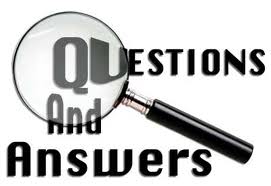 Many presentations and meetings are not complete without a question and answer session. Questions and answers help involve people in the program and establish a feedback link between you and the group. When done effectively these discussions are fruitful and productive. When mishandles they often unravel into meaningless and unfocused debates and unproductive side conversations. To make your next meeting a success here are some proven and practical Do’s and Don’ts for conducting question and answer sessions.
Many presentations and meetings are not complete without a question and answer session. Questions and answers help involve people in the program and establish a feedback link between you and the group. When done effectively these discussions are fruitful and productive. When mishandles they often unravel into meaningless and unfocused debates and unproductive side conversations. To make your next meeting a success here are some proven and practical Do’s and Don’ts for conducting question and answer sessions.
DOs for conducting question and answer sessions:
1. Treat the question and answer sessions as part of the presentation; the presentation is not over until the last question is answered.
2. It is embarrassing to ask for questions and have none asked because of the reluctance on the part of the group to ask the first question. A good technique for “priming the pump” when this happens is to say, “A question I am frequently asked is…” and then answer that question. Often that’s all that’s needed to get the questions flowing.
3. Look directly at the person asking the question. Show total interest in that person and what is being asked. Keep your hands free.
4. Listen for both content and feeling by observing facial expressions and body language.
5. Repeat the question for the rest of the group if necessary. If you’re not sure exactly what the questioner means, paraphrase the question with, “Let me be sure I understand what you’re asking.”
6. Thank the questioner. Look at the entire group while answering, glancing back occasionally to the person who asked the question.
7. If the question is emotionally charged or belligerent, use “active responding,” in answering. Never put down the questioner or get in a verbal battle.
8. Treat two questions from the same person as two separate questions.
9. Admit you don’t have an answer it if you don’t. Offer to find out and get back to that person.
10. Be factual and accurate. Avoid phrases like, “Everyone knows. . .” or “It’s a well-known fact. . .”
11. Rotate the way you select questions from the group. Let the individuals seated in all areas of the room have a chance to ask questions.
12. Anticipate the kinds of questions you will be asked and have statistics, quotes and support at your finger tips.
13. Keep a positive attitude. Avoid getting on the defensive.
14. Remain in control of the session.
15. Do not let the Q & A session drag on or fizzle out. Be sure to keep it within the time limits. When you’re nearly out of time, tells your audience, “There’s time for only one more question.”
16. Keep your answers brief and to the point, but be sure to answer the question as completely as possible. A good format to follow in many cases is to give a one sentence answer or a “yes” or “no,” give the reason, a brief example and a restatement of your answer.
17. Always have a “power statement,” phrase or story to close the session. You may review the key points covered.
DON’Ts for conducting question and answer sessions:
1. Don’t grade questions by telling one questioner, “That’s a good question,” but not telling others their questions are good, too. Just answer the question.
2. Don’t allow one person to ask all the questions. Simply say, “Many others have questions. I’ll get back to you if there is time.”
3. Avoid answering with such phrases as “Well, obviously…” or “As I said in my talk…” these are all put-down phrases.
4. Don’t use negative body language. Don’t put your hands on your hips while you are listening to the question or answering, or fold your arms over your chest.
5. Don’t point one finger at your audience while you’re speaking. That’s a scolding pose and it makes you seem “preachy.”
6. Avoid “off-the-record” statements.
7. Never hedge or avoid answering a question. Give them a straight answer.
8. Don’t argue with the questioner. If he or she persists, offer to discuss the question with the person after the meeting.
9. Don’t get down to the level of a nasty questioner. Usually other salespeople will take care of a rude questioner if you remain the “good guy.”
By following these Dos and Don’t s you’ll be able to manage the group’s need for information without getting sidetracked into unproductive topics or discussions. When conducting question and answer sessions your role is to encourage questions and to provide helpful and productive answers.

